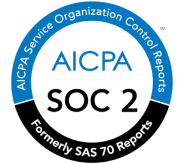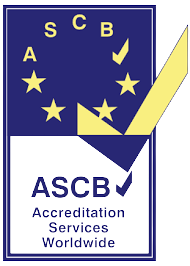Table of Content
- Introduction
- Importance of Employee Benefits and Compensation
- 4 Types of Employee Benefits
- 4 Types of Compensation Structures
- 6 Compensation Strategies for Employees
- Designing an Effective Benefits Package
- 4 Ways of Ensuring Fair and Competitive Compensation
- Strategies to Communicate the basics of Benefits and Compensation
- Evaluating the Impact of Benefits and Compensation
- Adapting to Changing Workforce Needs
- Conclusion
- FAQs on Employee Benefits and Compensation
- How can organisations address pay equity issues?
- What are some tax considerations for employee benefits?
- How often should compensation packages be reviewed and updated?
- How can companies adapt their benefits to accommodate a remote workforce?
Introduction
Employee benefits and compensation are vital components of Human Resource Management (HRM) that play a crucial role in attracting, retaining, and motivating employees. In this article, we'll delve into the basics of employee benefits and compensation, their significance, types, design, and strategies for effective implementation.
Also read: 4 Day Work Week Benefits You Can Leverage
Want to skip the blog copy?

Importance of Employee Benefits and Compensation
Employee benefits and compensation packages serve as powerful tools for organisations to demonstrate their commitment to the well-being and satisfaction of their employees. Employee benefits packages can attract top talent, improve their morale, and foster a positive environment to work.
4 Types of Employee Benefits
- Health Benefits: These encompass medical, dental, and vision insurance, as well as wellness programs aimed at promoting employee health and well-being.
- Retirement Benefits: Includes pension plans, 401(k)s, and other retirement savings options that provide financial security for employees post-retirement.
- Paid Time Off: Encompasses vacation days, sick leave, and holidays.
- Additional Benefits: These can range from tuition reimbursement and flexible work arrangements to commuter benefits, offering added value to employees.
4 Types of Compensation Structures
- Salary: The fixed monetary compensation paid to employees on a regular basis.
- Bonuses: Performance-based or profit-sharing incentives to recognize and reward exceptional contributions.
- Stock Options: Equity-based compensation that grants employees the opportunity to own a share of the company.
- Other Incentives: Non-monetary rewards such as recognition programs, company outings, and career development opportunities.
6 Compensation Strategies for Employees
- Performance-Based Pay:
This strategy involves tying a significant portion of an employee's compensation to their performance and contributions to the organisation. It encourages high performance and aligns individual goals with the company's objectives.
- Total Rewards Packages:
Total employee benefits packages encompass not only monetary compensation, but also non-financial rewards such as recognition, career development opportunities, and work-life balance initiatives. This holistic approach aims to create a fulfilling and motivating work environment.
- Competitive Benchmarking:
Regularly conducting market research to compare your organisation's compensation packages with industry standards and competitors is crucial. This ensures that your offerings remain competitive and attractive to top talent.
- Variable Pay and Bonuses:
Introducing variable pay components, such as bonuses linked to individual or team performance, can provide a strong incentive for employees to excel in their roles and contribute to the company's success.
- Long-Term Incentives:
Offering long-term incentives like stock options or profit-sharing plans can align employees' interests with the long-term success of the organisation. It encourages loyalty and commitment, as employees have a stake in the company's performance over time.
- Customised Job Grading and Classification:
Customised job grading and classification for salary benchmarking involves evaluating and categorising roles within the organisation based on factors such as job complexity, responsibilities, required skills, and experience.
This allows for a more nuanced approach to salary benchmarking, ensuring that each position is appropriately compensated based on its unique attributes and contributions to the company. Customised job grading helps in fine-tuning compensation packages to reflect the specific demands and value of each role within the organisation.
Designing an Effective Benefits Package
- Understanding Employee Needs: Conduct surveys and gather feedback to tailor benefits to the specific needs and preferences of your workforce.
- Legal Considerations: Ensure compliance with relevant employment laws and regulations to avoid legal complications.
- Cost Analysis: Balance the costs of providing benefits with the budgetary constraints of the organisation.
4 Ways of Ensuring Fair and Competitive Compensation
- Market Research: Stay updated on industry salary benchmarks to ensure your compensation packages remain competitive.
- Pay Equity: Address any gender or diversity-based pay disparities to promote fairness and equality within the organisation.
- Performance Evaluation: Tie compensation adjustments to performance reviews, linking rewards to individual contributions.
- Transparency: Maintain open communication about the rationale behind compensation decisions to build trust among employees.
Strategies to Communicate the basics of Benefits and Compensation
- Onboarding Process: Clearly communicate the benefits and compensation package during the onboarding process to set clear expectations.
- Regular Updates: Provide updates on any changes or additions to the benefits package to keep employees informed.
- Open Dialogue: Encourage employees to ask questions and seek clarification about their benefits and compensation. In fact, when teams are implementing smart human resource management software in their organisation, they get an opportunity to raise their concerns, queries, and ask the right questions either from a dedicated HR or from the HR chatbot to resolve queries on time.
Evaluating the Impact of Benefits and Compensation
Regularly assess the effectiveness of your benefits and compensation packages through employee surveys, turnover rates, and performance metrics. uKnowva’s complete end-to-end human resource management software in India, MENA, and Southeast Asia regions helps to provide these real-time and actionable insights to payroll officers and managers in the organisation. They understand how much pay is being disbursed to employees over a period and how it is directly impacted by the performance delivered by an average person in the team or the department.
Adapting to Changing Workforce Needs
Stay flexible and responsive to evolving employee needs and preferences to ensure that your benefits and compensation remain competitive and relevant.
Conclusion
In conclusion, employee benefits and compensation are pivotal in attracting and retaining top-class and top-notch talent, fostering a positive place or environment to work, and driving overall organisational success. By understanding the needs of your workforce, designing effective packages, and ensuring fairness, organisations can create a workplace where employees thrive.
FAQs on Employee Benefits and Compensation
How can organisations address pay equity issues?
To address pay equity, organisations should start by conducting regular pay audits to identify any disparities. They should also establish clear and transparent pay scales, based on factors like job role, experience, and performance. Additionally, providing equal opportunities for career advancement and promotions can help bridge any existing gaps.
What are some tax considerations for employee benefits?
Tax considerations for benefits depend on the specific type of benefit. For example, health benefits provided by the employer are often tax-deductible, while certain fringe benefits may have tax implications for both the employer and employee. It's advisable to consult with a tax professional to navigate these complexities effectively.
How often should compensation packages be reviewed and updated?
Compensation packages should be reviewed regularly to ensure companies remain competitive in the market. Additionally, any significant changes in the organisation's financial situation or industry standards may warrant more frequent reviews.
How can companies adapt their benefits to accommodate a remote workforce?
Companies can adapt benefits for a remote workforce by offering flexible work arrangements, providing technology allowances, and ensuring access to virtual wellness programs. It's also important to consider benefits that address the unique challenges of remote work, such as ergonomic support and mental health resources. Regular communication with remote employees to understand their needs is key to this adaptation process.












